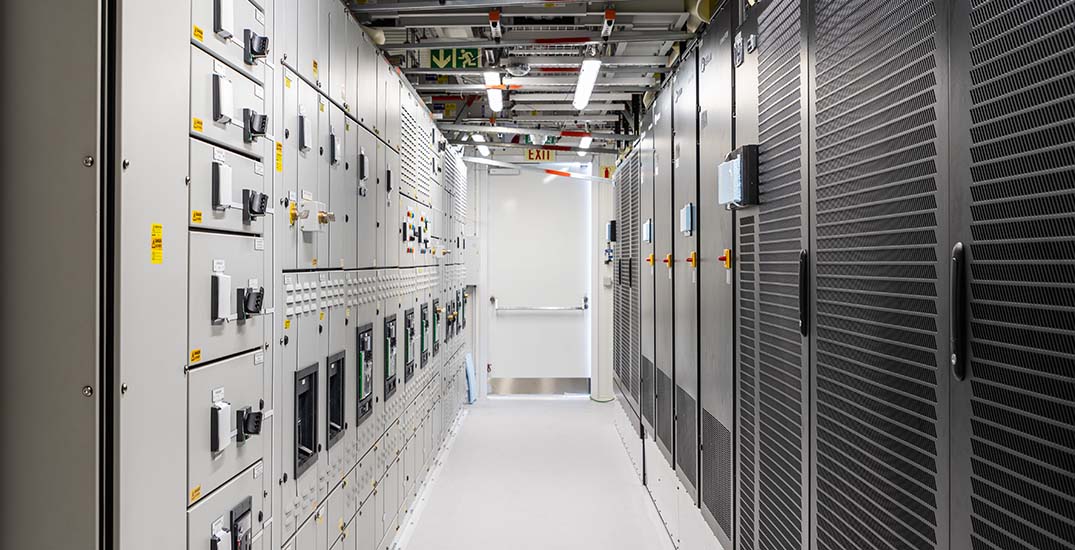Kathy Gibson reports from Zagreb, Croatia – As technology becomes more pervasive in people’s lives, the amount of data being created is growing apace.
This means this data needs to be secured, made available and preserved, says Karsten Winther, president, Europe, Middle East and Africa at Vertiv.
And this leads to the increasing pace of data centre deployment and development, he explains. “The more technology is being adapted for people, the more technology there is, and the bigger the data centre industry will become.”
The big trend in the market today is artificial intelligence (AI), Winther points out, and this is driving the need for much more data. “It is also changing the way we design and deploy data centres around the world,” he says.
The move to AI is going to fundamentally change the world, Winther says. It will lead to changes on the same scale as the Internet and cloud computing.
“Just consider that Nvidia has made a high-resolution digital twin of planet Earth, how much data this requires. They have literally created a copy of the planet.
“AI is a huge enabler of this. But imagine the compute and energy that is required for this.”
Changes in technology and data centre design are required to serve the new higher density AI workloads. “As the servers in the rack have to execute more instructions, faster, it creates more heat – which creates the need for more muscles in the data centre.
“This is why the density is such a key thing for us. We anticipate an increase in total addressable market with AI workloads being primarily new to the existing market.”
Data Hall cooling solutions will continue to be a material portion of the total market, particularly in new AI data centre designs.
“Air may no longer be sufficient for cooling these environments,” Winther says, “And so liquid cooling will become a needed capability.
“This is a completely different engineering game; and why the demand for AI is a completely different story from a couple of years ago.”
Generative AI (GenAI) is, in fact, turbo-charging the market, Winther adds.
GenAI is expected to increase global GDP by $7-trillion – or 7% per year over a 100-year period – with a 1,5% growth in labour productivity.
Global revenues for AI-related software, hardware and services is forecast to surpass $900-billion, representing an 18,6% CAGR.
“Everyone agrees that AI is only going to grow,” Winther summarises.
There are many different opportunities to utilise AI, he adds. These span the hardware industry value chain and the back-office, calling for new ways of working and engineering systems.
The impact of AI on the data centre drives a 100% increase in power flexibility, so dynamic grip support becomes a strategic asset.
The other way it is affecting data centres is in the areas of cooling, with dual cooling (air and liquid) rapidly rising. The liquid cooling market is expected to grow at about 40% CAGR to reach $500-million.
The availability of modular hybrid cooling solutions are a big benefit from prefabricated data centres, Winther adds.
Winther concludes that AI is setting new terms for data centre builds and retrofits. This is key since most data centres already in use were designed for pre-AI workloads – so retrofitting them can extend their useful life and ROI.
“We also know that from next year, clients will opt for solutions that can be deployed at speed, which is why the prefabricated sector is so important.”
In addition, extending the lifecycle of existing infrastructure is a carbon-friendly option.
At the same time, power is a global issue, and identifying new ways to deploy battery storage is key.
Vertiv is bringing various battery solutions to market that are more cost-effective and sustainable.
Flexibility is key, Winther stresses, as enterprises rely on services to ensure continual operation.
And, of course, security is top of mind for data centre leaders. “Ransomware is a huge risk to the world, geo-political tensions and wars increase the risk,” Winther says. “And this leads to new questions about how we are able to secure the data.”
Vertiv develops and manufactures data centre solutions that span electrical equipment, thermal management, racks, PDUs, thermal management, and prefabricated modular environments.
These prefabricated modular solutions (PMSs) have seen exceptional growth over the last few years, Winther says, and are helping to drive the rollout of new data centre facilities.
Within the EMEA region, Vertiv has nine manufacturing and assembly locations, more than 65 service centres, more than 650 service engineers, above 100 technical support and response personnel, and five customer experience centres – including one in Johannesburg.
The bulk of the company’s business today is in data centre infrastructure, with activity also in critical infrastructure and communications networks.
Winther points out that Vertiv has enjoyed good sales growth which has allowed it to invest more in R&D and services. The company has been growing its R&D investment by 11% each year.
Vertiv has a long history in the data centre business, having formed back in 1965 as Liebert. It has been known as Vertiv since 2016 when it was spun off from Emerson, and is today the major supplier of critical data centre infrastructure equipment in the world.

